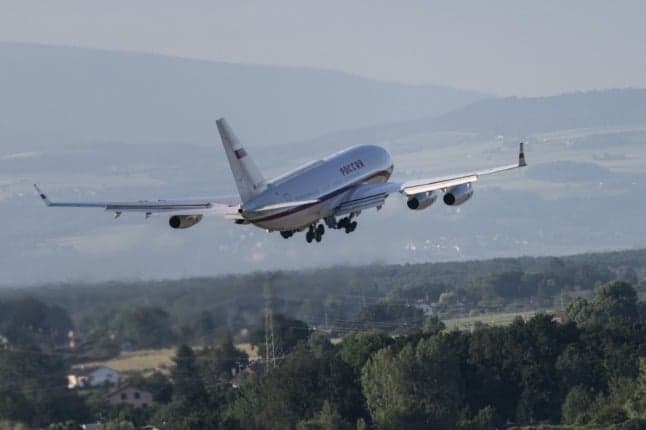Sweden prepares to shut airspace to Russian planes

Sweden is preparing to quickly close Swedish airspace to Russian flights, Swedish EU Minister Hans Dahlgren said on Sunday.
"It is now absolutely necessary to proceed with further tough measures to isolate Russia," Dahlgren told public service radio SR.
The Minister said the most effective course of action would be for EU countries to make a joint decision.
Sweden will push for such a flight ban at a meeting of EU foreign ministers scheduled later today, which could form part of the latest package of sanctions against Russia.
READ ALSO: INTERVIEW: How could Russia’s war in Ukraine affect Sweden?
Many EU member states have already closed their airspaces to Russian aircraft, while a more concrete decision could soon follow.
"We want this to happen as quickly as possible and the best and fastest way is if we can get a common EU decision," said Dahlgren.
"The background is, of course, that we want to go ahead with even more and sharper efforts to isolate Russia. One such effort is to close Swedish airspace and, better still, the whole of European airspace to Russian flights," he went on to say.
"At the same time, preparations are underway in Sweden to be able to take a decision as quickly as possible that would ban Russian flights over Swedish territory.
"Some formalities are required, but it could be as quickly as a few hours or a day at the most," he added.
Dahlgren is convinced that many countries will close their airspace.
"I think there will be a lot of support for this," the EU Minister claimed.
Denmark, Germany and Italy on Sunday also said it would close their airspace to Russian planes, joining other European countries in ramping up sanctions against Moscow over its invasion of Ukraine.
In addition, Finland, Britain, Poland, Bulgaria, Czech Republic and Romania are among the nations who have decided to shut off their airspaces to Russia's aircraft.
Comments
See Also
"It is now absolutely necessary to proceed with further tough measures to isolate Russia," Dahlgren told public service radio SR.
The Minister said the most effective course of action would be for EU countries to make a joint decision.
Sweden will push for such a flight ban at a meeting of EU foreign ministers scheduled later today, which could form part of the latest package of sanctions against Russia.
READ ALSO: INTERVIEW: How could Russia’s war in Ukraine affect Sweden?
Many EU member states have already closed their airspaces to Russian aircraft, while a more concrete decision could soon follow.
"We want this to happen as quickly as possible and the best and fastest way is if we can get a common EU decision," said Dahlgren.
"The background is, of course, that we want to go ahead with even more and sharper efforts to isolate Russia. One such effort is to close Swedish airspace and, better still, the whole of European airspace to Russian flights," he went on to say.
"At the same time, preparations are underway in Sweden to be able to take a decision as quickly as possible that would ban Russian flights over Swedish territory.
"Some formalities are required, but it could be as quickly as a few hours or a day at the most," he added.
Dahlgren is convinced that many countries will close their airspace.
"I think there will be a lot of support for this," the EU Minister claimed.
Denmark, Germany and Italy on Sunday also said it would close their airspace to Russian planes, joining other European countries in ramping up sanctions against Moscow over its invasion of Ukraine.
In addition, Finland, Britain, Poland, Bulgaria, Czech Republic and Romania are among the nations who have decided to shut off their airspaces to Russia's aircraft.
Join the conversation in our comments section below. Share your own views and experience and if you have a question or suggestion for our journalists then email us at [email protected].
Please keep comments civil, constructive and on topic – and make sure to read our terms of use before getting involved.
Please log in here to leave a comment.